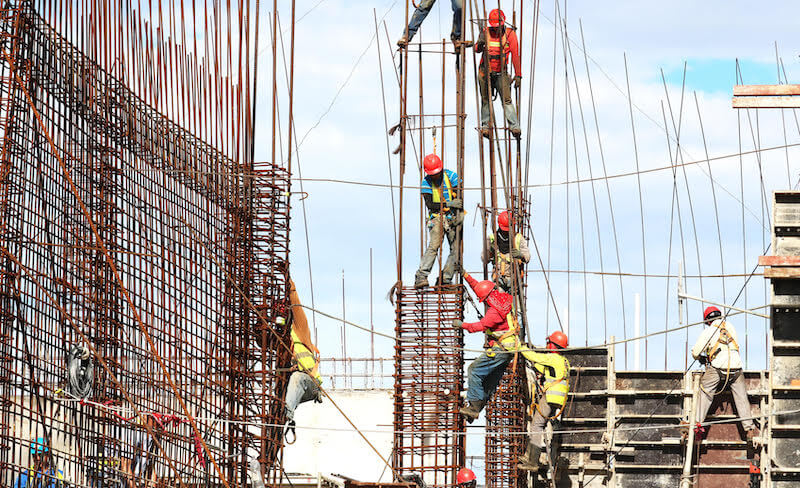
Nasty weather can cause delays, put a construction crew at risk, and cause a project to lose money. One study found that weather can extend the length of time it takes to complete a project by an average of 21%. This is why the construction industry needs to double down on planning for bad weather. Luckily, there are ways to make a construction project much more resilient to the ravages of mother nature.
1) Avoid Delays: Harsh weather conditions can cause all sorts of project delays. A sudden rainstorm can lead to an exposed roof being seriously damaged or turn a foundation into mud. Or when the temperature on-site plummets, it can become impossible to pour concrete. By pinpointing bad weather you can prepare for the elements while avoiding the time-consuming mistake of being overly cautious on-site.
Tip: A hyper-local real-time alert system will help you determine whether or not your crew can complete a weather-sensitive task. Any on-site function that can be affected by rain, temperature, ice, lightning, wind speed and even road conditions can be modified based on changing conditions. Everyone on the project who needs this information can be immediately alerted by text, email or mobile app.
2) Increase Worker Safety: Not taking the proper precautions when the weather goes south can put your people in harm’s way. On the other hand, preparing your construction site for severe weather will reduce worker injuries. And an ounce of prevention is worth a pretty penny in weather-related illnesses and other risks that can lead to crew members having to miss work or even quit a project.
Tip: A highly effective way to ensure the safety of your crew is to let them know about extreme temperatures, lightning, high winds and other weather conditions that could put them at risk. Being able to reach your people with these customized alerts via SMS, email or a mobile app will make it more likely that they have time to prepare accordingly, or even call it a day if need be.
3) Protect Equipment: Nasty weather can wreak havoc on the equipment used on a construction site. Strong winds can wear out your gear and even damage it. Hot days can have a negative impact on materials like sealants and mortar. Meanwhile, rain can devastate a drywall project. And high winds can pose serious danger for your crew by blowing away knives, hook blades, ladders and shovels from roofs.
Tip: Construction companies can now access street-level weather forecasts. Forget citywide predictions for the next 24-hours or so. Technology now makes it possible to get street-by-street, minute-by-minute forecasting and alerts that give you the information you need to decide which equipment to use, how to use it or if it’s better to leave equipment locked up until that thundershower passes by.
4) Weather and the Bottom Line: Weather-related delays in the United States cost about $4 billion every year. As it is, construction companies have extremely low profit margins compared to other major industries. This means that even minor changes in weather conditions that weren’t accurately predicted can turn a profitable project into a money pit. These expensive setbacks can be caused by everything from excessive rains that turn dirt into mud to extremely dry conditions that make it impossible to begin foundation work.
Tip: Reliable, job-site specific forecasts can streamline your operation by helping you account for fast changing weather conditions and avoid cost overruns. For example, receiving an alert a few minutes before a rainstorm hits will give your crew the time it needs to secure exposed roofs on a construction site. If you’re running a larger commercial project, customized alerts can ensure that your project managers only receive the information they need while foremen and other on-site crew members get the notifications that are most relevant to their job functions.
Can Weather Be Outsmarted?
Because of these threats to your project’s success and security it’s important to develop ways to manage extreme weather. Weatherproofing your next construction project starts with planning for the unexpected. When nasty weather rears its ugly head you need to be ready for it.
See how White Castle Roofing uses Tomorrow.io’s weather data

